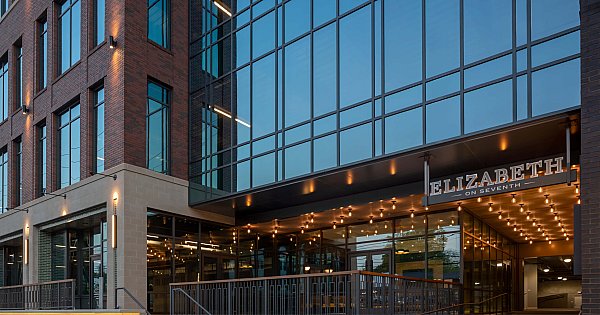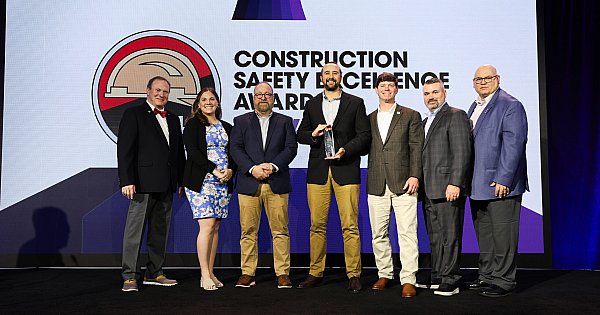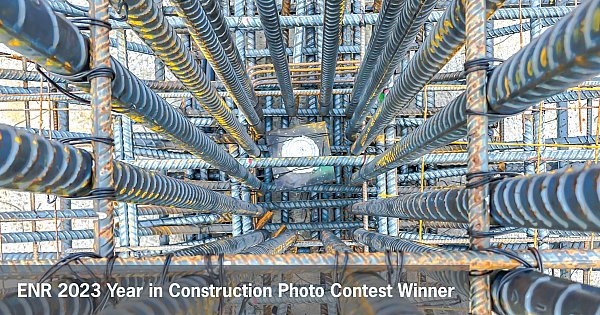
Multi-faceted, mixed-use project provides space for critical education, advocacy, medical care, and more through community nonprofits.

- AGC Build GA Awards, First Place


Boys & Girls Club of Greater Augusta Headquarters
The HUB, located in historic African American neighborhoods, is a game-changer for a community that has experienced decades of disinvestment. By bringing existing resources and nonprofits together in one location, the project bolsters equitable access to all the essential elements of a thriving community. Access to free, quality healthcare, as well as educational support, provides the tools residents need in order to stay and thrive within their community.
The Boys & Girls Club of Greater Augusta headquarters and support center is one of two primary structures on the campus, located in the historic Harrisburg neighborhood between Fenwick Street, Chafee Avenue, and the relocated Wall Street. Known as “HUB East,” this 18,000-SF, 2-story building includes multiple classrooms, training rooms, and community rooms on the first floor, while providing space for the Boys & Girls Club administrative team on the second floor.
HUB East showcases an ultra-modern design to connect with the more youthful demographic the organization supports. Serving as the headquarters for the nonprofit’s operations, the first floor of HUB East provides built-out spaces for multiple classrooms and training rooms, blended with larger community rooms for people to gather and connect with one another. On the second floor, offices and break-out space is constructed to support the nonprofit’s administrative team through a mix of private offices, open-air workspaces, and collaboration rooms. In addition to the pleasing aesthetic, the quality of and intentionality behind HUB East’s design enable the Boys & Girls Club to better empower the area’s youth to excel in school, become good citizens, and lead healthy, productive lives in a safe, fun place to learn and grow year-round.


HUB for Community Innovation Main Building
The HUB campus’ main building, “HUB West,” offers 37,500 SF of modern space to foster innovation and collaboration between nonprofit organizations, corporate citizens, and residents to ultimately transform the future of the community. This sophisticated mixed-use building is constructed to provide medical care, tutoring services, retail space, and mentoring for the community.
The two-story facility serves as a home for nonprofit organizations such as Harrisburg Family Healthcare, the urban gardening advocacy group Augusta Locally Grown, the Augusta University Literacy Center, and RISE Augusta, in addition to resources for public school children from disadvantaged households – all of which are designed to bolster personal health, well-being, and education in all age groups.
The industrial design of HUB West is inspired by the various mills that supported the Augusta community in the 1700s and 1800s, channeling that history through its angled roof lines, red brick façade, sky-high windows and ceilings, and open high-bay communal spaces. To provide optimal functionality in this one building housing four different tenants, HUB West is intentionally constructed in a way that promotes collaboration through cohesive, open design, while also providing space to uniquely accommodate each organization and their individual service offerings. The project team achieved this by dividing HUB West into three sections on two different floors, with five pods designed for community collaboration.


Using Construction Technology
The project began just as the pandemic hit, but the team persevered in the face of uncertainty, assuring the owner and stakeholders the aggressive timeline would still be met, even as costs continued to escalate during the project. Details for a project of this caliber were vetted extensively through Choate’s Virtual Design + Construction (VDC) team to determine clash detection and coordination of materials. These models were a vital tool and ensured nothing was re-worked after materials were installed.
In addition to material shortages caused by the pandemic, this project was very unique in the sheer quantity of project stakeholders, two foundations, five non-profit tenants, three lenders, new-market tax credit financing, third-party program manager, and neighborhood constituents. Through consistent, transparent communication and steady collaboration, the project team developed strong relationships with all involved to ensure a seamless construction process and successful delivery.


Engaging the Local Community
In alignment with the clients’ passions of community engagement, Choate exhibited its dedication to being an outstanding community partner ensuring local contractors and minority-owned contractors were used wherever possible. Our team understood this community engagement extended beyond the contracted scope and held numerous local trade partner participation events at the beginning of the project, complete with BBQ and refreshments.
Choate played an active role in ensuring this project supported the neighborhoods’ future development, growth, and needs. In partnership with the Boys & Girls Club of Greater Augusta, Choate hosted jobsite tours for 20-25 students (ages 14+) at two distinct phases of the construction effort (structure erection and MEP Rough-In). These two- to three-hour tours consisted of a Choate-led, classroom-style session in the job trailer to introduce the students to the Architectural, Engineering, and Construction (AEC) disciplines, followed by a site walk to see those disciplines in practice. The idea was to provide them with some exposure to the processes, technologies, and career opportunities in the AEC industry.
We want to hear from you! Whether you have questions about this project, want to reach a particular team member or office, or want to learn more about our services, please let us know how we can serve you.
Project Contact
Superica Fenton
BUILDING A VIBRANT DINING ATMOSPHERE WITH CUSTOM DESIGNS AND FIXTURES












